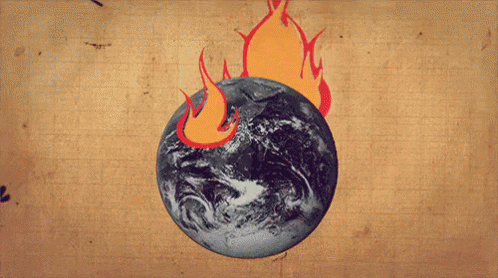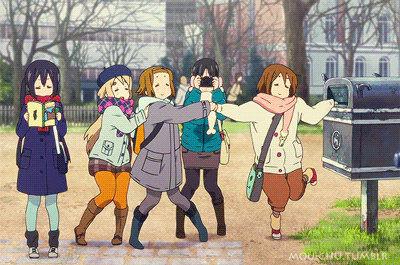100,000 planes take off and land every day, across the world. While you are reading this piece, 83 million cars are driving on roads, this very minute. There are about 380 million motorbikes wheeling around. Imagine the collective clouds of smoke from 100,000 planes, 83 million cars and 380 million motorbikes. That smoke is also called - ‘leaving a nice thick greyish blackish unfriendly carbon footprint’!
Before we get onto our story, I have a little announcement to make to all of my curious readers. We will be hosting two summer camps this year.
(a) Podcasting camp (5 days) - you get to pick your topic, we’ll help you research it, write a script AND publish your own podcast episode! Each session starts with a set of games and story-building jam sessions.
(b) Writing your own book and becoming a published author (10 days) - you’ll join a bunch of kids who will come together and brainstorm. Each child will draft their own plot lines, build interesting characters (and exchange ideas for backstories for them) and develop their own twists, turns and endings. We’ll guide you on how to edit and publish all of it, in one big fat novel. You’ll be a published author! Each session has a lot of games - think words, pictures, quick-thinking, memory and much more.
If you are interested, check out the dates and cost details by clicking on the button below. Drop me a note at hello@wsnt.in if you have any other queries. I read every single email and love to hear from you :)
Onto our story about planes, trains and bikes….
What exactly is a carbon footprint? It's the total amount of greenhouse gases, including carbon dioxide and methane, produced by our activities. Carbon footprint is measured by how many tons of carbon dioxide (or similar green-house gases) we emit every year. The average person in the world leaves a carbon footprint of 4 tons a year. But, a person living in the US emits wayyyyy higher than that. The average American emits 16 tons of CO2 a year (and they love to lecture others about lowering carbon footprint!).
I don’t know what we are going to do to reduce the carbon footprint from whizzing planes / cars / motorbikes. But, there is something we can do to reduce waste that ends up in landfills. When waste disintegrates in landfills, that too produces methane (another greenhouse gas). Summer is almost here and so is travel season. This post is about a ton of ways to travel responsibly, so we leave ZERO-waste behind. It is possible!
What to pack - so we leave ZERO-waste behind
Carry your own waterbottle from home (even if you are flying to Paris!) - Not buying those single-use plastic water bottles is the first and easiest ways to achieving ZERO-waste. Fill your water bottle at the beginning of each day of your travel and you’ll be covered. When I travel with my family, we carry 3-4 water bottles from home. So far, we have almost NEVER had to buy a plastic water bottle in the past 6 years. Also, plenty of destinations have clean water that you can refill your bottles with. Never fear being dehydrated!
Go paperless: Whenever possible, opt for digital alternatives. For example, don’t print your booking details (luckily, most places don’t require a printed version of your booking either). Show your tickets / boarding passes on your phones. Also, instead of grabbing a newspaper at the station or airport, try listening to a podcast. It's a cool screen-free option. We recommend What’s New Today podcast for both kids and adults – it offers a blend of news and fun stories that's perfect for the whole family (gee! couldn’t resist saying that :)
Take what you have at home, instead of buying it at your destination: When it comes to your shampoo / soap bars / laundry bars, just pack what you already have at home. Buying mini-sachets or versions of these is damaging to the environment since most recyclers do not recycle small sachets and just throw them down the landfills. If you are worried that the large packs / bottles you have at home would spill, put them all in one giant separate plastic packet and tie them firmly with a rubber band. You’ll come back with most of the big bottles, but you’ll continue to use them at home as well. You won’t have unnecessarily thrown a half-used small sachet during your travels.
Carry a lunch box or two - Often times when we travel, we pick up interesting road-side snacks that we may get packed for a take-away. I have found it very useful to get this packed in a box instead of a plastic / paper wrap.
Do not pack too many clothes - Traveling lighter and fewer things reduces the load on planes (i.e. lesser fuel) and on yourself. You’ll spend lesser time tracking what you have and have to carry lesser weight around!
One cool discovery for you to make - you’ll find yourself throwing near-to-zero of anything in a waste-paper basket, when you travel, IF you start planning in advance. I suggest you maintain a daily journal where you note down - ‘What did I throw in the waste paper bin today’. See if you find a pattern of waste that you can avoid the next time you travel!
What to do on a vacation
Mark Twain said that it was super important for little children, young adults and boring adults (or whoever you are) to travel widely. It was the only way to really know what other cultures look like. Or, people could get the wrong notion about other people from misleading Youtube videos and Instagram reels. Of course, Mark Twain did not know about carbon footprint when he spoke about all this - because we know that Tom Sawyer and Huckleberry Finn (2 of my favourite heroes from his books) did a lot of rowing up and down rivers.
I am a fan of the idea of traveling to lots of places, getting to meet interesting people and taste different kinds of foods. But, but, but….let’s try some of these ideas so we leave a smaller carbon footprint!
Think trains, buses, boats —enjoy the scenic route. Take public transports to travel to your destinations. Avoid getting into taxis / cabs if you can. Amsterdam has great trams. Delhi and Kolkata have good metros. You get the drift! After all, it's about enjoying the journey as much as the destination! Also, you get to meet locals you can chat up with, while on a tram. How would you do that, if you just went everywhere by cab!
Be a tourist in your state or region: get ready for delightful surprises! These days I've been trying to uncover as many hidden gems as possible near where I live. Boy, I'm shocked I didn't know about these places sooner!
Walk and bike as much as possible: Strap on those sneakers or dust off that bicycle—it's the ultimate combo of exercise and adventure! Bonus: You can explore your surroundings at a leisurely pace and revel in the sights and sounds along the way. Check out if your destination allows you to rent a bicycle and get on that!
Eat local: Instead of trying a regular pasta or a sandwich, try local foods. This means most of the ingredients are from the neighbourhood. That’s how you reduce the carbon footprint of the food vendor too. Also, local food can tantalize your taste buds and help you get more adventurous with new experiences. It's a win-win for your palate and the planet!
Find eco-friendly accommodations: Instead of staying in fancy resorts (many of which waste way more water than they should), explore renting homestay accommodations. These are homes of regular people. A lot of them are sensible with their upkeep (they won’t hose down the property every other day and waste a ton of water). Also, I recently stumbled upon the joy of staying in a homestay where they grow their own food (yes! in their own kitchen garden!). The food was yummy!
Experiences over Expenses: Remember, the essence of travel lies in immersing yourself in unique experiences, rather than accumulating generic souvenirs devoid of true meaning. Tours and unforgettable moments are the real treasures of your journey, easily captured and preserved through digital photography in our modern age.
Don’t buy unnecessary souvenirs: If the urge to bring home a souvenir strikes, opt for practical items or heartfelt crafts that will hold significance long after your trip ends, sparing them from the fate of being discarded during the next round of cleaning. Personally, I prefer collecting simple treasures like pressed flowers, leaves tucked into my book, or pebbles I can paint as mementos of my adventures.
Try guided walking tours - many places have one! Most of these tours will take you around a place, walking at a leisurely place and tell you the history of the place. Many of them are also free. I have had walking tour guides who are so funny that I just laughed throughout 2-hour tours. These guides earn money through the tips we leave them (so leave a nice fancy tip if you enjoyed the tour). Who doesn’t like a good tale while on a holiday!
Going Zero-waste takes a little planning and a little adventure
So let me leave you with 5 Rs……
Reduce: Travel light (even I struggle with this!). Bring only essentials and resist unnecessary purchases.
Reuse: Pack your zero-waste kit! Got a torn T-shirt from your hike? Repurpose it into napkins for your trip.
Recycle: When you travel, discard recycleable waste into appropriate bins.
Rot: Look for composting options whenever possible (some places let you throw banana peels into composters around the street corners).
Repair: Don't let a broken item ruin your trip. Seek out repair services or DIY solutions. During my trip to McLeod Ganj, a friend's hiking shoe fell apart. We found a local cobbler, and they were back on track in no time!
Remember, a journey is not only about exploring the world but also about preserving it. From packing light and opting for reusable alternatives to seeking repair solutions, every choice we make contributes to a more sustainable future for travel. As we explore new destinations, let us remember that our actions, no matter how small, have the power to shape a more sustainable future for generations to come. Together, let's wander wisely, leaving behind nothing but footprints and memories.
Once again, a little reminder
If you want to find out more about our summer courses on podcasting and writing, pop over here and check out the details.









